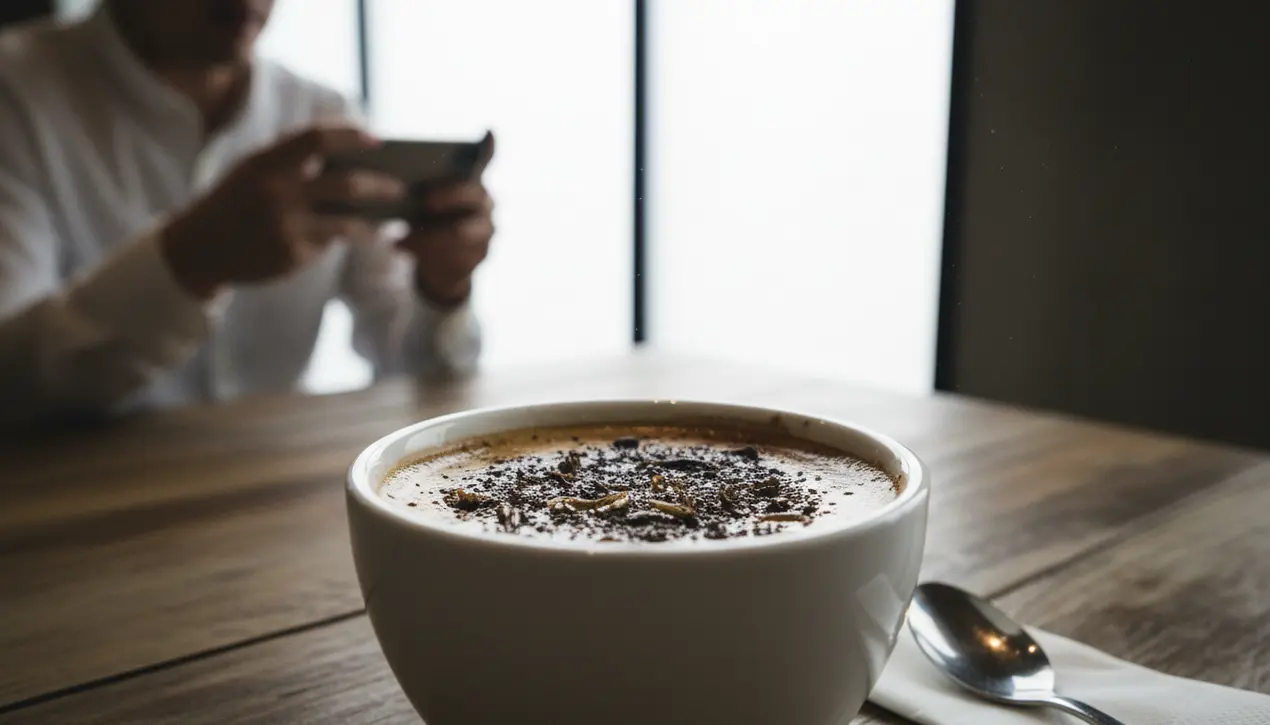
Otherfood & diningRestaurant Openings
Beijing Museum Serves Coffee with Ground Cockroach Topping
ME
Megan Hill
3 hours ago7 min read1 comments
In a move that is either a stroke of gastronomic genius or a prank gone horribly right, a museum in Beijing has decided that your average cinnamon or cocoa dusting is far too pedestrian for their lattes. Instead, they're offering a caffeine kick with a side of heebie-jeebies, sprinkling the surface of their signature brew with finely ground cockroaches.Yes, you read that correctly. For a cool 45 yuan (that's about six bucks for those of us who don't have our currency converters handy), you can sip on a coffee laced not just with your standard Arabica beans, but also with dried, pulverized yellow mealworms, creating a concoction that early drinkers have described with a delightful lack of enthusiasm as having a 'burnt and slightly sour' flavour profile.While the report from The Cover news outlet tantalizingly withheld the museum's specific name, the very existence of this insectoid espresso speaks volumes about our evolving, and sometimes terrifying, relationship with food. This isn't just a shock-value stunt; it's part of a much larger, global conversation about sustainable protein sources.As the world's population continues to balloon and the environmental cost of traditional livestock farming becomes increasingly untenable, scientists and food innovators have been looking to the insect kingdom for answers. Crickets, mealworms, and yes, even the much-maligned cockroach, are packed with protein, require a fraction of the land and water that cows or pigs do, and produce significantly fewer greenhouse gases.From a purely logical, data-driven perspective, it's a no-brainer. The psychological hurdle, however, is a canyon-sized chasm for many.The 'ick' factor is a powerful force, deeply ingrained in Western cultures where bugs are seen as pests, not pantry staples. Yet, in many parts of the world, including regions of Asia, Africa, and Latin America, entomophagy—the practice of eating insects—is a completely normal and nutritious part of the diet, enjoyed roasted, fried, or steamed.What this Beijing museum café is doing, in its own bizarre way, is acting as a culinary bridge, introducing the concept to a potentially skeptical urban population in a familiar format: coffee. It’s a clever, if unsettling, bit of normalization.Imagine the scene: a visitor, perhaps a student on a field trip or a tourist looking for an offbeat attraction, wanders into the museum's coffee shop. They see the menu, their eyes widen, a internal debate rages between curiosity and revulsion.The brave (or foolhardy) who take the plunge aren't just buying a drink; they're participating in a small-scale experiment in future-food adoption. The 'burnt and slightly sour' notes reported by patrons are likely a far cry from the sweet, nutty, or even shrimpy flavours described by enthusiasts of other edible insects, suggesting that the roasting and preparation process for this particular brew might need some refinement.But the very fact that people are trying it, and that a news outlet is reporting on it, means the idea is getting oxygen. It pushes the boundaries of what we consider acceptable to consume, challenging our palates and our prejudices in one fell swoop.It’s a conversation starter, a social media moment waiting to happen—picture the Instagram story, the wide-eyed selfie with the speckled coffee cup. Whether this specific drink becomes a lasting menu item or fades away as a curious footnote, its legacy will be in making the idea of bug-eating just a little less strange, one creepy-crawly cappuccino at a time.After all, lobster was once considered prison food, and sushi was viewed with deep suspicion outside of Japan. Today's disgusting novelty can be tomorrow's gourmet delicacy, and this Beijing museum is betting that the future of food might just have six legs.
#featured
#cockroach coffee
#insect brew
#Beijing museum
#food trends
#unusual drinks
#culinary innovation
#China
Stay Informed. Act Smarter.
Get weekly highlights, major headlines, and expert insights — then put your knowledge to work in our live prediction markets.
Comments
Loading comments...
© 2025 Outpoll Service LTD. All rights reserved.